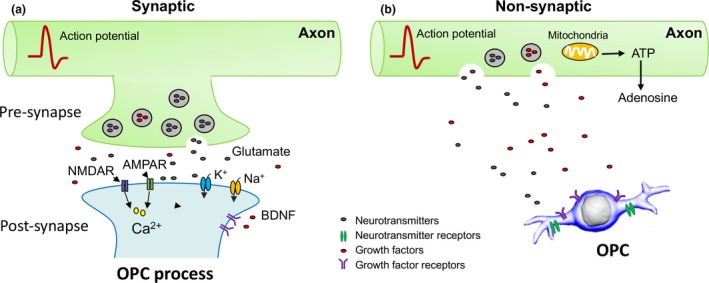Figure 2.

Neuronal depolarization traverses action potentials along axons, resulting in an activity‐dependent vesicular release and activity‐dependent non‐vesicular release. (a) This enhances the release of neurotransmitters such as glutamate and the fusion of synaptic vesicles into the periaxonal space, which subsequently activates neurotransmitter receptors such as glutamate receptors [α‐amino‐3‐hydroxy‐5‐methylisoxazole‐4‐propionate receptors (AMPARs) and NMDA receptors (NMDARs)] expressed on the processes of oligodendrocyte precursor cells (OPCs) or oligodendrocytes, promoting influx of Ca2+ into the cytoplasm. (b) Alternatively, active axons can also signal OPCs via non‐synaptic vascular release of growth factors [e.g. platelet‐derived growth factor (PDGF) AA and neurotrophins] and neurotransmitters (e.g. glutamate, GABA or ATP). OPCs express not only ion channels including glutamate‐activated ion channels, the sodium and potassium channels, but also receptors of growth factors. These cellular properties make OPCs equipped to respond to neuronal activity.
